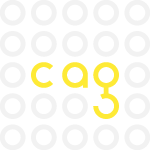Challenge: Steinberg Architects had enjoyed recent success in their efforts to break into the Asian architectural services market and wanted to take advantage of that momentum. Their new projects were starting design phases and they wanted to leverage that work to pursue new clients and bigger projects. Their US-based website was difficult to maintain and impossible to change or adapt. Hosting from the US also meant slow load times and frequent blackouts in access. Furthermore, the content featured on the site did not support their brand image in the Asia marketplace. They needed a website presence that was tailored specifically to their Chinese audience by focusing on very specific areas of their portfolio of work. It also needed to be easy to change and fast to update as they wanted to continuously feature the latest design work from their active projects in Asia as those projects progressed. They needed a web presence in Asia to support upcoming business development efforts but had no budget or time to produce it.
Action: After gathering all business and strategic needs and requirements, I proposed to create a Steinberg “mini” site with a narrowly-focused subset of content from the current US site and the new content being generated day to day from projects in Asia. It would be designed, coded and developed with internal resources to minimize costs. I tasked internal company staff not to just translate but localize the portfolio projects, people profiles and firm profiles. The localized content influenced the structure and functionality of the site that was ultimately designed. For example: people profiles were more expanded and had lots of references and links to external sources of influence such as academic institutions and professional associations. Projects included lists of design, technical and professional awards bestowed on the project from industry and government organizations. The new site would be coded in HTML for speed and easy of implementation. I proceeded to update user controls and page flows to modern user experience standards using jQuery functionality. Multiple rounds of design directed the strategy of the look and feel for the mini site to be an extension or evolution of the US-website.
Concept A – “Reinvent”
Concept B – “Modernize”
Concept C – “Update”
Result: The new mini website made use of modern user experience standards which resulted in a more user-friendly experience while maintaining a connection to the US-based corporate brand. The localized content supported new business development pursuits resulting in the acquisition of bigger and more prestigious project contracts.




































